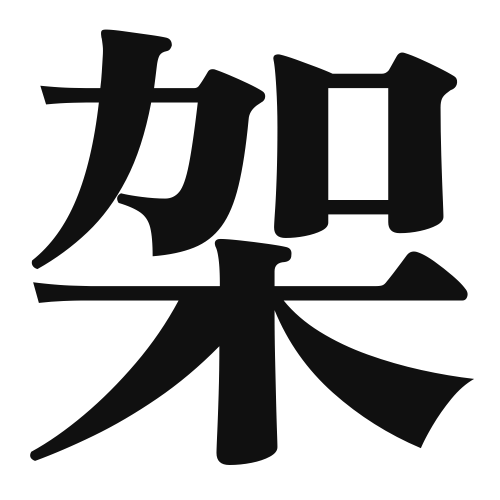1. Overview of Meaning
The kanji “架” (ka) generally means “to support” or “to hang.” It is often used in contexts related to frameworks, structures, or anything that serves as a support system.
2. Formation and Radicals
The kanji “架” is a compound character (会意文字) that combines elements to convey its meaning. It consists of the radical “木” (tree) which symbolizes support or structure, and “加” (to add), suggesting the idea of adding support to something.
The radical “木” is commonly associated with trees and wooden structures, reinforcing the idea of support and stability.
3. Examples of Usage
Common words and phrases that include “架” are:
- 架橋 (かきょう, kakyō) – bridge
- 架空 (かくう, kakū) – fictional or imaginary
Example sentences in daily conversation:
- この架橋はとても美しいです。 (This bridge is very beautiful.)
- 彼の話は架空の物語です。 (His story is a fictional tale.)
4. Synonyms and Antonyms
Similar kanji with related meanings include:
- 支 (し, shi) – to support, which emphasizes the act of providing support.
- 立 (りつ, ritsu) – to stand, which focuses on stability rather than support.
Antonyms include:
- 倒 (とう, tō) – to fall or collapse, which conveys the opposite of support.
5. Cultural and Historical Background
The kanji “架” has significance in Japanese culture, particularly in architecture and design, where the concept of support is crucial. It is often used in discussions about traditional Japanese structures, such as temples and bridges.
Proverbs and idiomatic expressions that include “架” are less common, but the concept of support is prevalent in many sayings that emphasize the importance of community and mutual assistance.
